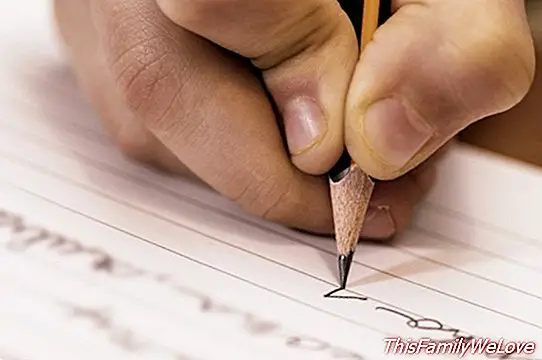Grafomotricidad, how to help improve writing in children

We are in summer, the notes were delivered and the children were delivered to their vacations. A stage that although it is characterized by being dedicated to rest, it can also be used for many others activities in order to improve the academic curriculum. Take a few hours a week to not disconnect at all and remember some notions.
For example, those children who present a calligraphy can deficient in the summer to try to improve the quality of its letter. For this they can use development techniques such as graphomotor, which develops the fine motor apparatus of the smallest of the house and helps to increase the quality of their writing.
What is the graphomotor?
Some specialists define graphomotor skills as "fine motor development", that is to say, the one that appears when the child has developed a certain capacity to control the movements of his body, especially in the hands and arms .. Analyze the processes involved in the production of spellings, will help teach them to the little ones so that they can automate them and improve their writing.
Internalize the way in which an arm and a hand move to achieve a quality of letter excellent will allow this objective. The graphomotor activity is an exercise of control of the motor apparatus in the youngest, a process involving cognitive, affective and psychomotor aspects of the subject in a capacity to write.
Practice the graphomotor
The beginning of graphomotor exercises will depend on the degree to which the child has developed control over his own body. If you are able to coordinate senses such as sight and touch, this may be a good time to start practicing the first exercises in this sense. These are some activities with which to immerse yourself in this sense:
- Manipulation of objects: The child can begin to develop his fine motor apparatus by manipulating objects with his hand and fingers. Items such as sponges, chalk, brushes, waxes and finally pencils, to get used to them.
- Learn how to move in the graphic universe. The child must learn to make the first strokes from left to right and from top to bottom.
- First letters. The child can begin to know the basic strokes to build letters, learn to make the necessary movements to build words.
In this first stage there is no need to put an end, simply introduce the child in the graphomotor skills and accustom him to move his fingers and hands in this way. A training so that you know how to perform certain strokes before starting to internalize the correct way to achieve a good graph. It is also recommended in this phase that parents read with their children and show them the letters so that they are recognized by their mind and thus relate to a type of movement.
The parents You can also help your children in the following way:
- Find a way to encourage the little ones in the house. Activities such as 'let's draw a puppy', or anything that motivates the child to participate in these exercises. We should not take them as an obligation but as something playful.
- Ensure a safe environment and where the child wants to participate.
- Patience and repeat as many times as necessaryIf the child does not get it the first time is normal. You must re-explain how you should act until you get it.
Development of hands and fingers
As it has been said, the graphomotor search for the child to master his fine motor apparatus, hands and fingers, to make the strokes correctly. These are some exercises to get started writing.
Exercises for hands:
- Play palms trying to follow a rhythm.
- Perform balance exercises with the palm of your hand.
- Make gestures depending on the lyrics of some song.
- Imitate animal movements with their hands as for example the claw of a lion.
Exercises for the fingers:
- Open and close the fingers of the hand, first simultaneously, then alternating them. Go increasing speed.
- Join and separate the fingers, first freely, then following orders.
- Touch each finger with the thumb of the hand corresponding, increasing the speed.
- With your hand closed, take your fingers one behind the other, starting with the little finger.
- Screw and unscrew lids, cans, nuts ...
- Button and undo buttons.
- Tying and untying ties.
- Fit and disengage objects.
- To model with plasticine balls.
Damián Montero




